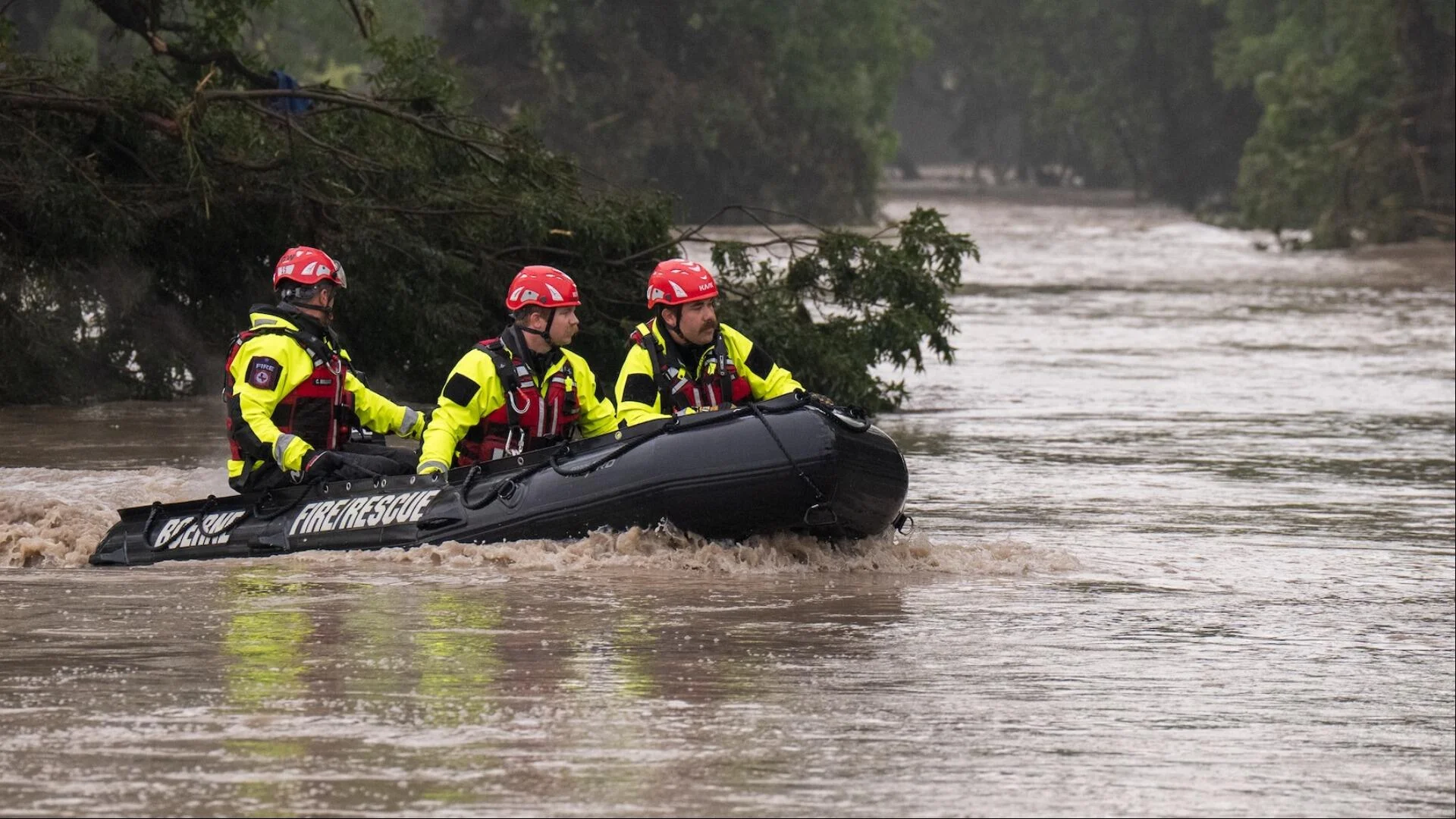The catastrophic flooding that swept through Central Texas on July 4 has left communities reeling, with reports of multiple fatalities and widespread destruction. As relentless rains transformed the Guadalupe River into a raging torrent, the harsh reality of climate change became painfully evident. In response, community-driven mutual aid organizations, like Hands Off Central TX, are stepping up to provide immediate assistance, raising funds for housing, food, and medical supplies for the hardest-hit areas.
Overwhelming Waters and Community Resilience
The flooding that devastated counties such as Bandera, Kerr, Tom Green, and Kendall was triggered by an unprecedented downpour, dumping months" worth of rainfall in just a few hours. This extreme weather event not only resulted in loss of life but also highlighted the urgent need for effective disaster response mechanisms. As reported by The Washington Post, the river reached its second-highest level on record near Hunt, surpassing historic floods from 1987.
Mutual Aid as a Lifeline
In the wake of such disasters, government responses often prove inadequate. Institutional mutual aid networks are vital in providing immediate relief where state and federal mechanisms fall short. According to research on mutual aid organizing, these networks are characterized by their community-driven nature, relying on the lived experiences of those involved to guide their efforts. Research indicates that mutual aid fosters a sense of solidarity and empowerment, enabling communities to help one another during crises.
\n\n
Texas House of Representatives
Crucial Funding for Recovery Efforts
Hands Off Central TX is actively raising funds to support mutual aid rapid response efforts, emphasizing the need for immediate resources. Their campaign aims to provide housing, food, and medical supplies to those impacted by the floods. This grassroots fundraising effort highlights a critical shift towards community self-reliance in disaster recovery, as traditional government support remains inconsistent. As the Texas Division of Emergency Management outlines, state-led recovery efforts often face bureaucratic hurdles that delay assistance to those in dire need.
Failure of Government Response
The Emergency Management Assistance Compact (EMAC) allows states to request personnel and supplies from one another, but it has its limitations. As documented in Texas"s emergency management guidelines, the government often focuses on structural responses rather than addressing the immediate needs of vulnerable populations. This oversight can exacerbate the suffering of those directly affected by natural disasters.
\n\n
Texas officials give update on death toll, rescue efforts amid flooding
Climate Change"s Role in Increased Flooding
The severity of the Texas floods cannot be disconnected from the broader context of climate change. As weather patterns become more unpredictable and extreme, communities are increasingly vulnerable to disasters of this magnitude. The implications of climate change are not just environmental; they are social and economic as well. The financial burden of recovery falls disproportionately on marginalized communities, who often lack the resources to recover fully from such shocks. This reinforces systemic inequalities and highlights the need for a more equitable approach to climate resilience.
As we witness the aftermath of the July 4 flood, it is evident that mutual aid networks are a crucial component of disaster recovery. They exemplify the power of community solidarity in times of crisis, providing immediate support where institutional responses fail. The urgency of addressing climate change has never been more apparent, calling for a concerted effort to build sustainable, resilient communities capable of withstanding future environmental challenges.








![[Video] More videos of ANTIFA activities emerge in Giessen](/_next/image?url=%2Fapi%2Fimage%2Fthumbnails%2Fthumbnail-1764454862523-wtbpg5-thumbnail.jpg&w=3840&q=75)